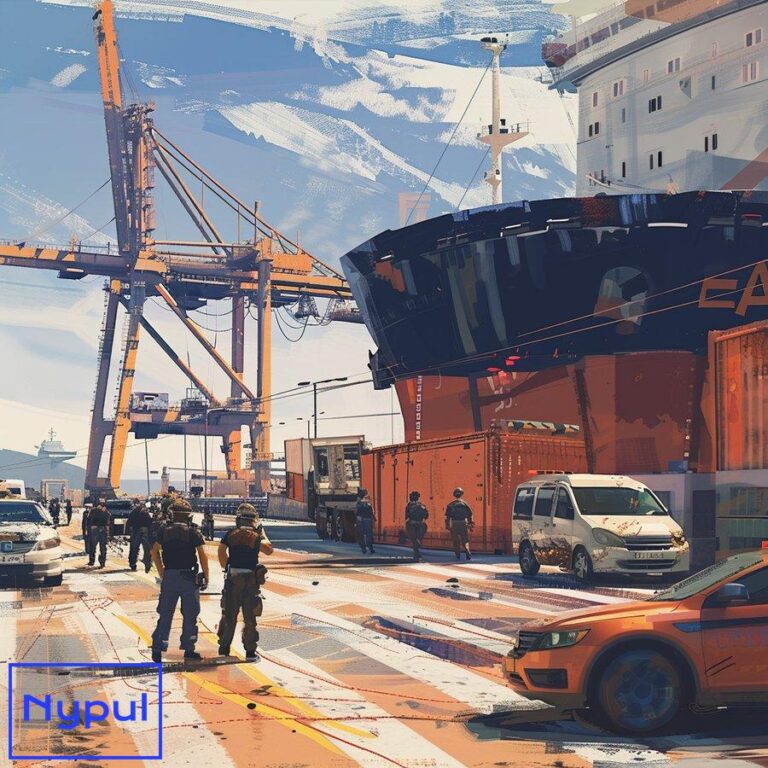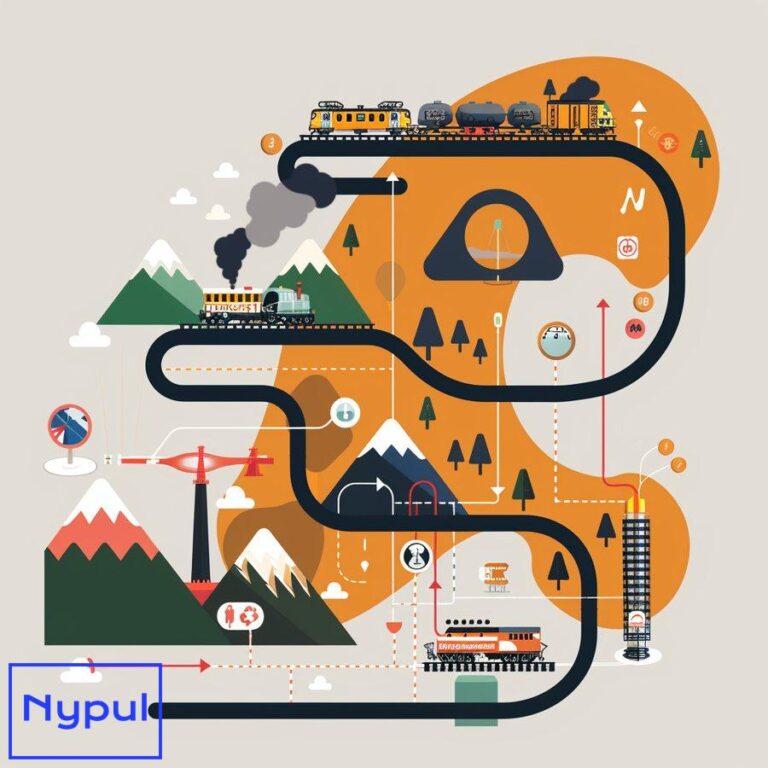What Is the Fee for Drayage
How are drayage fees typically structured?
Drayage fees, the charges associated with short-distance transportation of shipping containers and cargo, follow a structured approach that reflects the complexities of modern logistics. Understanding this structure is crucial for businesses engaged in international trade or domestic shipping.
Base Rate
The foundation of drayage fees is the base rate. This core charge covers the fundamental service of moving a container from point A to point B within a defined local area. Typically, the base rate includes:
- Driver’s time
- Fuel costs
- Basic equipment usage
- Standard route navigation
Drayage providers calculate the base rate using factors such as distance, container size, and weight. For instance, a 20-foot container transported 50 miles might incur a lower base rate compared to a 40-foot container moved over the same distance.
Per-Mile Charges
Some drayage companies opt for a per-mile pricing model, especially for longer distances within the drayage scope. This structure offers transparency and allows shippers to easily calculate costs based on the exact distance of their shipment. The per-mile rate often decreases as the total distance increases, reflecting economies of scale in transportation.
Flat Rate Pricing
Flat rate pricing is another common structure in drayage fees. Under this model, providers charge a fixed amount for transportation within specific zones or between predetermined points. This approach simplifies budgeting for shippers and can be advantageous for regular, predictable shipments.
Time-Based Pricing
Time-based pricing structures account for the duration of the drayage service. This model is particularly relevant in congested areas or when dealing with time-sensitive cargo. Rates may be hourly or based on half-day or full-day increments. Time-based pricing often includes:
- Actual transit time
- Loading and unloading periods
- Any waiting time at ports or terminals
Accessorial Charges
Beyond the base rate, drayage fees typically include various accessorial charges. These additional fees cover services or circumstances beyond standard transportation. Common accessorial charges include:
- Fuel surcharges
- Detention fees for extended wait times
- Chassis usage fees
- Special handling for hazardous materials
- After-hours or weekend service charges
Contract vs. Spot Pricing
Drayage fee structures can also vary based on the nature of the business relationship:
Contract Pricing: For shippers with consistent volume, drayage providers often offer contract pricing. This structure typically features negotiated rates based on projected annual volume and can include discounts or preferential terms.
Spot Pricing: For one-time or irregular shipments, spot pricing applies. These rates are generally higher than contract rates and fluctuate based on current market conditions, capacity, and demand.
Tiered Pricing Models
Some drayage companies employ tiered pricing models, where rates decrease as volume increases. This structure incentivizes shippers to consolidate their drayage needs with a single provider. Tiers might be based on:
- Number of containers per month
- Total weight or volume shipped
- Frequency of shipments
Port-Specific Fees
Drayage fees often include port-specific charges, reflecting the unique operational costs and requirements of different port facilities. These can include:
- Terminal handling fees
- Port congestion surcharges
- Documentation fees
- Security or inspection charges
Technology-Driven Pricing
With the advent of digital platforms and real-time tracking, some drayage providers now offer dynamic pricing models. These structures adjust rates based on current conditions, such as traffic patterns, port congestion, or available capacity, providing more accurate and flexible pricing.
Understanding the structure of drayage fees empowers shippers to make informed decisions and effectively manage their transportation costs. By recognizing the various components that contribute to the overall fee, businesses can better negotiate rates, plan their logistics strategies, and identify opportunities for cost optimization in their supply chain operations.
What factors influence the cost of drayage services?
The cost of drayage services is influenced by a multitude of factors, each playing a significant role in determining the final price shippers pay for moving their cargo over short distances. Understanding these factors is crucial for businesses to effectively budget for and manage their drayage expenses.
Distance and Route
The distance between the pickup and delivery points is a primary factor in drayage costs. Longer distances naturally incur higher fees due to increased fuel consumption, driver time, and vehicle wear. However, the relationship between distance and cost is not always linear. Factors that can affect the distance-based pricing include:
- Route complexity
- Traffic patterns
- Road conditions
- Tolls and road fees
For instance, a shorter route through a congested urban area might be more expensive than a longer route on well-maintained highways.
Container Size and Weight
The dimensions and weight of the container being transported significantly impact drayage costs. Standard container sizes include 20-foot, 40-foot, and 45-foot containers, with larger containers generally incurring higher fees. Weight is equally important, as heavier loads:
- Require more fuel to transport
- May necessitate specialized equipment
- Can be subject to additional road fees or permits
Overweight containers often incur substantial surcharges and may require special handling or routing.
Type of Cargo
The nature of the cargo being transported can greatly influence drayage costs. Special considerations that may increase prices include:
Hazardous Materials: Transporting hazardous materials requires additional safety measures, specialized equipment, and often, specific driver certifications.
Temperature-Controlled Goods: Perishables or pharmaceuticals requiring refrigeration or climate control incur higher costs due to the specialized equipment needed.
High-Value Items: Cargo with exceptional value may require additional security measures or insurance, increasing the overall drayage cost.
Fragile or Oversized Items: Goods that require special handling or cannot be transported in standard containers often lead to higher drayage fees.
Time Sensitivity
The urgency of the shipment plays a crucial role in determining drayage costs. Expedited or time-sensitive deliveries often command premium rates due to:
- Priority handling at ports and terminals
- Potential need for dedicated transportation
- Possible overtime or after-hours operations
Conversely, flexible delivery windows may allow for more cost-effective scheduling and routing.
Port and Terminal Efficiency
The efficiency of the ports and terminals involved in the drayage process significantly impacts costs. Factors include:
- Wait times for loading and unloading
- Documentation processing speed
- Availability of chassis and other equipment
- Overall congestion levels
Ports known for long wait times or frequent delays often result in higher drayage fees to compensate for the additional time and resources required.
Seasonal Demand
Drayage costs can fluctuate based on seasonal demand patterns. Peak shipping seasons, such as the months leading up to major holidays, often see increased drayage rates due to:
- Higher demand for transportation services
- Potential equipment shortages
- Increased port congestion
Conversely, off-peak seasons may offer more competitive rates as providers seek to maintain steady business volumes.
Fuel Prices
Fuel costs represent a significant portion of drayage expenses. Fluctuations in fuel prices directly impact drayage fees, with providers often implementing fuel surcharges to offset increases. The relationship between fuel prices and drayage costs is typically dynamic, with fees adjusting in response to market conditions.
Regulatory Environment
The regulatory landscape in which drayage operations occur can significantly influence costs. Factors include:
- Environmental regulations requiring cleaner-burning engines or alternative fuels
- Hours of service rules limiting driver operating times
- Port-specific regulations on truck emissions or equipment standards
Compliance with these regulations often requires investments in new equipment or operational changes, which can drive up drayage costs.
Labor Costs
The cost of labor, including driver wages and benefits, is a substantial component of drayage fees. Factors affecting labor costs include:
- Local wage rates and labor market conditions
- Union agreements and regulations
- Driver shortages or high turnover rates
Areas with higher living costs or strong labor unions typically see higher drayage rates reflecting increased labor expenses.
Equipment Availability
The availability of necessary equipment, particularly chassis, can impact drayage costs. Shortages of chassis or specialized equipment can lead to:
- Increased wait times
- Higher rental fees
- Potential need for chassis splits (separate trips to obtain chassis)
These factors can significantly increase the overall cost of drayage services.
Market Competition
The level of competition among drayage providers in a given market can influence pricing. Markets with numerous providers may see more competitive rates, while those with limited options may experience higher prices due to reduced competition.
Technology and Efficiency
The adoption of technology by drayage providers can impact costs in various ways:
- GPS tracking and route optimization can reduce fuel consumption and improve efficiency
- Digital documentation and communication systems can streamline operations and reduce errors
- Automated scheduling and dispatching can improve asset utilization
Providers investing in these technologies may offer more competitive rates due to improved operational efficiency.
Understanding these factors allows shippers to better anticipate and manage their drayage costs. By considering these elements when planning shipments and selecting drayage providers, businesses can make informed decisions that balance cost-effectiveness with service quality and reliability.
How can you calculate drayage fees for your shipment?

Calculating drayage fees for your shipment requires a systematic approach that takes into account various factors and potential charges. While the exact calculation can vary depending on the drayage provider and specific circumstances, following a structured method can help you estimate costs more accurately.
Step 1: Determine the Base Rate
Start by identifying the base rate for your shipment. This typically depends on:
- Container size (20-foot, 40-foot, etc.)
- Distance of transportation
- Origin and destination points
Many drayage providers offer online calculators or rate sheets that provide base rates for standard routes and container sizes.
Step 2: Account for Weight Surcharges
If your container exceeds standard weight limits, additional charges may apply:
- Determine the exact weight of your loaded container
- Check the provider’s weight thresholds and associated surcharges
- Add any applicable overweight fees to your base rate
Step 3: Consider Fuel Surcharges
Fuel surcharges are common in drayage pricing and can fluctuate based on current fuel prices:
- Check the current fuel surcharge percentage or fixed amount
- Calculate the fuel surcharge based on your base rate
- Add this amount to your running total
Step 4: Evaluate Accessorial Charges
Identify any additional services or special circumstances that may incur accessorial charges:
Chassis Usage: If a chassis is required and not included in the base rate, add the chassis rental fee.
Detention Charges: Estimate potential detention time beyond the free period and calculate charges based on the provider’s hourly rates.
Special Handling: Add fees for hazardous materials, temperature-controlled cargo, or other special requirements.
Port Fees: Include any specific port or terminal charges that are passed on to the shipper.
Step 5: Factor in Time-Based Charges
If your drayage provider uses time-based pricing:
- Estimate the total time required for the drayage operation, including potential wait times
- Multiply the estimated hours by the provider’s hourly rate
- Compare this to the distance-based calculation and use the higher amount
Step 6: Apply Volume Discounts
For regular or high-volume shipments:
- Check if you qualify for any volume-based discounts
- Apply the discount percentage to your subtotal
Step 7: Include Insurance Costs
If additional cargo insurance is required:
- Determine the value of your shipment
- Calculate the insurance premium based on the provider’s rates
- Add this to your total
Step 8: Consider Peak Season Adjustments
During high-demand periods:
- Check if the provider applies peak season surcharges
- Add any applicable seasonal fees to your calculation
Step 9: Account for Geographic Specifics
Different regions or ports may have unique pricing structures:
- Research any location-specific fees or surcharges
- Add these to your total if applicable
Step 10: Compile Total Drayage Fee
Sum up all the components calculated in the previous steps to arrive at your estimated total drayage fee.
Example Calculation
To illustrate this process, let’s consider a hypothetical shipment:
- 40-foot container
- 50-mile transport distance
- Standard weight (no overweight charges)
- 2-hour estimated wait time at port
| Component | Calculation | Amount |
|---|---|---|
| Base Rate | Fixed rate for 40-foot container, 50 miles | $300 |
| Fuel Surcharge | 10% of base rate | $30 |
| Chassis Usage | Daily rental fee | $50 |
| Port Fee | Fixed charge | $75 |
| Detention | 2 hours @ $50/hour | $100 |
| Total Estimated Drayage Fee | $555 |
This example demonstrates how various components contribute to the total drayage fee. Keep in mind that actual fees can vary significantly based on specific provider rates, regional factors, and current market conditions.
Tools and Resources for Calculation
To assist in calculating drayage fees:
Online Calculators: Many drayage providers offer online tools that allow you to input shipment details and receive instant estimates.
Rate Sheets: Request current rate sheets from potential providers to compare base rates and accessorial charges.
Historical Data: If you ship regularly, analyze past invoices to identify patterns and average costs for similar shipments.
Industry Benchmarks: Consult industry reports or logistics associations for average drayage rates in your region.
By methodically working through these steps and utilizing available resources, you can develop a reasonably accurate estimate of drayage fees for your shipment. This approach allows for better budgeting, comparison shopping among providers, and identification of potential areas for cost savings in your drayage operations.
What are the most common types of accessorial charges in drayage?
Accessorial charges in drayage are additional fees beyond the base transportation rate that account for extra services or special circumstances in the shipping process. Understanding these charges is crucial for accurate budgeting and avoiding unexpected costs. Here are the most common types of accessorial charges encountered in drayage operations:
Detention Charges
Detention charges are among the most frequent accessorial fees in drayage. These charges apply when a driver or equipment is held beyond the allotted free time for loading or unloading. Key aspects of detention charges include:
- Typically calculated on an hourly basis after free time expires
- Rates can range from $50 to $150 per hour, depending on the provider and location
- Free time is usually 1-2 hours, but can vary by provider and shipment type
Shippers can minimize detention charges by ensuring efficient loading and unloading processes and coordinating closely with drayage providers on timing.
Chassis Usage Fees
Chassis, the wheeled trailers used to transport containers, often incur separate usage fees:
- Daily rental rates for chassis use
- Charges for chassis splits (when chassis and container are at different locations)
- Potential fees for specialized chassis types (e.g., tri-axle for heavy loads)
These fees can significantly impact total drayage costs, especially for longer-term storage or transportation needs.
Per Diem Charges
Per diem charges apply when containers or equipment are held beyond the agreed-upon free time:
- Typically charged on a daily basis
- Rates can vary widely, often ranging from $25 to $300 per day
- Different rates may apply for dry containers vs. refrigerated units
Efficient cargo handling and prompt return of equipment are key to avoiding excessive per diem charges.
Fuel Surcharges
Fuel surcharges are dynamic fees that fluctuate with fuel prices:
- Usually calculated as a percentage of the base transportation rate
- Updated weekly or monthly based on current fuel prices
- Can significantly impact total drayage costs during periods of high fuel prices
While shippers have limited control over fuel surcharges, understanding their calculation can aid in budgeting and cost projections.
Overweight Charges
Containers exceeding weight limits incur overweight charges:
- Fees for containers over standard weight limits (typically around 44,000 lbs)
- Additional charges for super-heavy loads requiring special permits or equipment
- Potential fines for violating road weight restrictions
Accurate weight declarations and proper load distribution are essential for managing overweight charges.
Hazardous Material Handling
Transporting hazardous materials involves additional responsibilities and potential charges:
- Surcharges for handling and transporting dangerous goods
- Fees for specialized equipment or safety measures
- Additional documentation and compliance costs
Proper classification and documentation of hazardous materials are crucial for accurate cost estimation and regulatory compliance.
Stop-Off Charges
When a drayage move involves multiple stops for partial loading or unloading, stop-off charges may apply:
- Fixed fee per additional stop beyond the initial pickup and final delivery
- Potential time-based charges for extended stops
- May include charges for route deviation
Consolidating shipments and optimizing routing can help minimize stop-off charges.
After-Hours or Weekend Service
Drayage services required outside of standard business hours often incur additional fees:
- Surcharges forAfter-Hours or Weekend Service
Drayage services required outside of standard business hours often incur additional fees:
- Surcharges for after-hours pickups or deliveries, typically ranging from $50 to $200.
- Weekend service charges, which can be higher due to limited availability of drivers and equipment.
- These fees reflect the increased operational costs associated with scheduling outside regular hours.
To avoid these charges, shippers should plan their logistics around standard operating hours whenever possible.
Documentation Fees
Documentation fees cover the administrative costs associated with processing shipments:
- Charges for preparing and filing necessary paperwork, such as bills of lading and customs documentation.
- Fees may also apply for electronic data interchange (EDI) services or other digital documentation systems.
- These fees can vary widely based on the complexity of the shipment and the provider’s policies.
Ensuring accurate and timely documentation can help minimize these costs.
Security Fees
In certain high-risk areas or for high-value shipments, security fees may apply:
- Charges for enhanced security measures, such as escorts or monitoring.
- Additional costs related to securing cargo in transit or at terminals.
- These fees are often influenced by local regulations or specific customer requirements.
Shippers should assess their security needs and discuss potential charges with their drayage provider.
Terminal Handling Charges
Terminal handling charges (THC) are fees assessed by port authorities or terminal operators:
- Costs associated with loading and unloading containers at port facilities.
- May include charges for storage, handling, or equipment usage while at the terminal.
- THC rates can vary significantly by port and are often influenced by local market conditions.
Understanding THC is essential for budgeting total shipping costs accurately.
Special Handling Charges
Certain shipments may require special handling due to their nature:
- Fees for transporting fragile items that need extra care during loading and unloading.
- Charges for oversized cargo that requires specialized equipment or handling procedures.
- Additional costs for temperature-sensitive goods that require refrigeration or climate control.
Properly classifying cargo and communicating requirements to the drayage provider can help manage these charges effectively.
Conclusion on Accessorial Charges
Accessorial charges in drayage can significantly impact total shipping costs. By understanding the common types of accessorial fees and their implications, shippers can better anticipate expenses and make informed decisions when selecting drayage providers. Effective communication with providers about specific needs and expectations can also aid in minimizing unexpected charges.
How do drayage fees vary across different regions and ports?
Drayage fees are not uniform; they vary significantly across different regions and ports due to a combination of factors including local market conditions, operational costs, infrastructure, and regulatory environments. Understanding these regional variations is crucial for businesses engaged in shipping and logistics.
Regional Economic Conditions
Economic factors play a vital role in determining drayage fees:
- Regions with higher living costs typically see elevated labor rates, which directly influence transportation costs.
- Areas experiencing economic growth may have increased demand for drayage services, leading to higher prices due to supply constraints.
For instance, major metropolitan areas like Los Angeles or New York often have higher drayage rates compared to rural regions due to increased operational costs and demand.
Port Infrastructure and Efficiency
The efficiency of port operations significantly impacts drayage fees:
- Ports with modern facilities and advanced technology tend to have lower handling times, reducing overall costs.
- Conversely, congested ports with outdated infrastructure often lead to longer wait times and increased detention charges.
For example, ports like Savannah benefit from efficient operations that help keep drayage costs competitive compared to busier ports like Los Angeles where congestion is more prevalent.
Local Regulations
Regulatory environments differ from one region to another, affecting drayage pricing:
- Some areas impose stricter environmental regulations that require investments in cleaner vehicles or alternative fuels, raising operational costs.
- Local laws regarding weight limits, driver hours of service, or security measures can also influence pricing structures.
Regions with stringent regulations may see higher drayage rates as providers pass on compliance costs to shippers.
Market Competition
The level of competition among drayage providers varies by region:
- Areas with numerous providers typically experience more competitive pricing due to market forces.
- Conversely, regions with limited options may see higher prices as providers capitalize on reduced competition.
For instance, regions with multiple logistics hubs often offer lower rates compared to isolated areas where few providers operate.
Seasonal Demand Fluctuations
Seasonal demand influences drayage pricing across different regions:
- Peak shipping seasons (e.g., pre-holiday periods) often lead to increased demand for drayage services, raising prices.
- Regions heavily reliant on seasonal industries (like agriculture) may experience dramatic fluctuations in pricing based on harvest cycles.
Understanding these seasonal trends helps businesses plan shipments strategically to avoid peak pricing periods.
Geographical Challenges
Geographical factors can also affect drayage fees:
- Regions prone to natural disasters (e.g., hurricanes) may see temporary spikes in prices due to disruptions in service.
- Areas with difficult terrain or limited access (such as mountainous regions) may incur additional charges due to increased operational challenges.
Shippers should consider geographical challenges when planning routes and selecting providers.
Port-Specific Fees
Different ports impose unique fees that contribute to overall drayage costs:
| Port | Terminal Handling Charge | Fuel Surcharge | Security Fee |
|---|---|---|---|
| Los Angeles | $150 | 10% | $25 |
| Savannah | $100 | 8% | $15 |
| New York | $200 | 12% | $30 |
These port-specific fees highlight the importance of understanding local cost structures when budgeting for shipments.
What strategies can help reduce overall drayage costs?

Reducing overall drayage costs requires a strategic approach that involves careful planning, effective communication with providers, and leveraging technology. Here are several strategies businesses can implement to minimize their drayage expenses:
Consolidate Shipments
Combining multiple shipments into a single load can significantly reduce drayage costs:
- Consolidation lowers per-unit transportation expenses by maximizing container utilization.
- It reduces the number of trips required, leading to lower fuel consumption and fewer accessorial charges.
Shippers should work closely with their logistics teams to identify opportunities for consolidation based on shipment schedules and destinations.
Negotiate Rates
Effective negotiation with drayage providers can lead to cost savings:
- Establish long-term relationships with preferred providers who may offer discounted rates based on volume commitments.
- Regularly review contracts and service agreements to ensure competitive pricing aligns with current market conditions.
Engaging in open discussions about pricing structures can yield favorable terms for both parties involved.
Utilize Technology
Leveraging technology can enhance efficiency and reduce costs:
- Implementing transportation management systems (TMS) allows shippers to optimize routes, monitor performance metrics, and gain visibility into shipping processes.
- Real-time tracking solutions help identify delays early on, allowing shippers to mitigate potential detention charges effectively.
Investing in technology not only improves operational efficiency but also enhances decision-making capabilities regarding logistics strategies.
Plan Efficient Routes
Careful route planning is essential for minimizing transportation costs:
- Analyze traffic patterns and road conditions when developing delivery routes.
- Avoid congested areas during peak hours whenever possible to reduce wait times at ports or terminals.
Utilizing route optimization software can aid in identifying the most efficient paths while considering factors like fuel consumption and delivery windows.
Monitor Fuel Prices
Fuel surcharges represent a significant portion of overall drayage costs. Monitoring fuel prices allows shippers to anticipate fluctuations:
- Consider locking in fuel surcharges through contracts if feasible.
- Encourage providers to utilize more fuel-efficient vehicles or alternative energy sources where possible.
By staying informed about fuel market trends, businesses can better manage this variable cost component within their logistics budgets.
Evaluate Provider Performance
Regularly assessing the performance of your chosen drayage providers helps identify areas for improvement:
- Track metrics such as on-time delivery rates, detention occurrences, and overall service quality.
| Provider | On-Time Delivery Rate | Average Detention Hours |
|---|---|---|
| Provider A | 95% | 1.5 |
| Provider B | 90% | 2.0 |
| Provider C | 92% | 1.8 |
Identifying underperforming providers allows shippers to either address issues directly or seek alternative options that better meet their needs.
How should you evaluate and choose a drayage provider?
Selecting the right drayage provider is critical for ensuring efficient transportation operations while managing costs effectively. The evaluation process should encompass several key criteria that align with your business needs. Here’s how you can systematically evaluate potential providers:
Experience and Reputation

Assessing a provider’s experience within the industry is vital:
- Look for companies with a proven track record of successful operations in your specific region or port.
Research customer reviews and testimonials online. A strong reputation often correlates with reliable service quality.
Service Offerings
Consider the range of services offered by potential providers:
- Ensure they provide comprehensive solutions tailored to your specific shipping needs (e.g., refrigerated transport, hazardous materials handling).
Verify whether they have capabilities for both domestic and international shipments if your business requires global logistics support.
Pricing Structure
Understanding a provider’s pricing structure is essential for budgeting purposes:
- Request detailed quotes that outline base rates along with any potential accessorial charges.
Compare multiple quotes from different providers while considering both price competitiveness and service quality.
Technology Integration
Evaluate how well potential providers leverage technology within their operations:
- Inquire about their use of transportation management systems (TMS), real-time tracking capabilities, or electronic documentation processes.
Providers utilizing advanced technology are likely better equipped to enhance efficiency while minimizing errors during transit.
Customer Service Quality
Strong customer service is crucial when dealing with logistics challenges:
- Assess responsiveness during initial communications; timely replies indicate a commitment to customer satisfaction.
Consider establishing direct lines of communication for ongoing support throughout your shipping process.
Flexibility and Scalability
Choose a provider capable of adapting as your business needs evolve over time:
- Assess their ability to handle fluctuations in shipment volumes without sacrificing service quality during peak periods.
Inquire about any contractual obligations that may limit flexibility; seek partners who offer scalable solutions aligned with your growth trajectory.
Safety Record
A solid safety record reflects a provider’s commitment to responsible operations:
- Review any safety certifications they hold along with incident reports related to cargo damage or accidents during transit.
Prioritize companies demonstrating adherence to industry safety standards; this minimizes risks associated with transporting valuable goods.
Conclusion
Understanding the complexities surrounding drayage fees is essential for businesses engaged in shipping operations. By comprehensively evaluating how these fees are structured, what factors influence them, how they vary across regions, strategies for cost reduction, and criteria for selecting a provider—shippers can make informed decisions that enhance their logistics efficiency while managing expenses effectively. Implementing these insights will ultimately contribute positively towards optimizing supply chain performance within an increasingly competitive marketplace.






